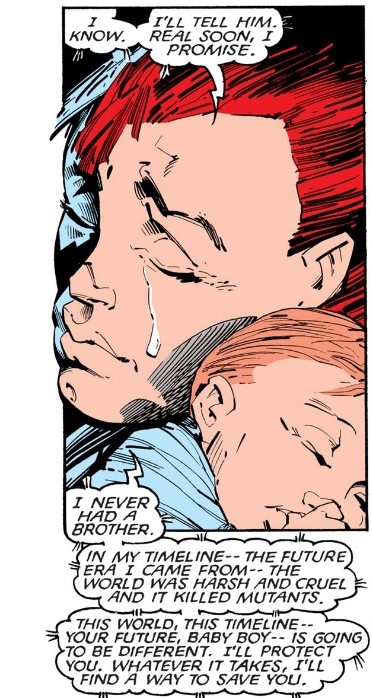Claremont is well-known for building long-term narrative tension through relationship-building (both romantic and, importantly, platonic) but one of his other main go-to strategies involves building long-term mysteries around parentage and parental reconciliation. #xmen 1/5
We see this approach in key characters such as Cyclops/Havok, Wolverine, Nightcrawler, Rachel, Legion, and Rogue. In all instances Claremont uses the reader’s sense of family separation to generate both character sympathy and intense narrative anticipation. 2/5
This strategy is particularly intriguing, given the X-Men’s long-acknowledged thematic emphasis on “found family” and what scholar Ramzi Fawaz refers to as “queer mutanity” -especially apt when considering real-world family division commonly experienced by the queer community 3/5
Claremont amps this up quite a bit, usually by putting parents and children at complete odds with each other (often in an antagonistic relationship) or by building impossible (even supernatural) barriers to their potential reconciliation. 4/5

 Read on Twitter
Read on Twitter






